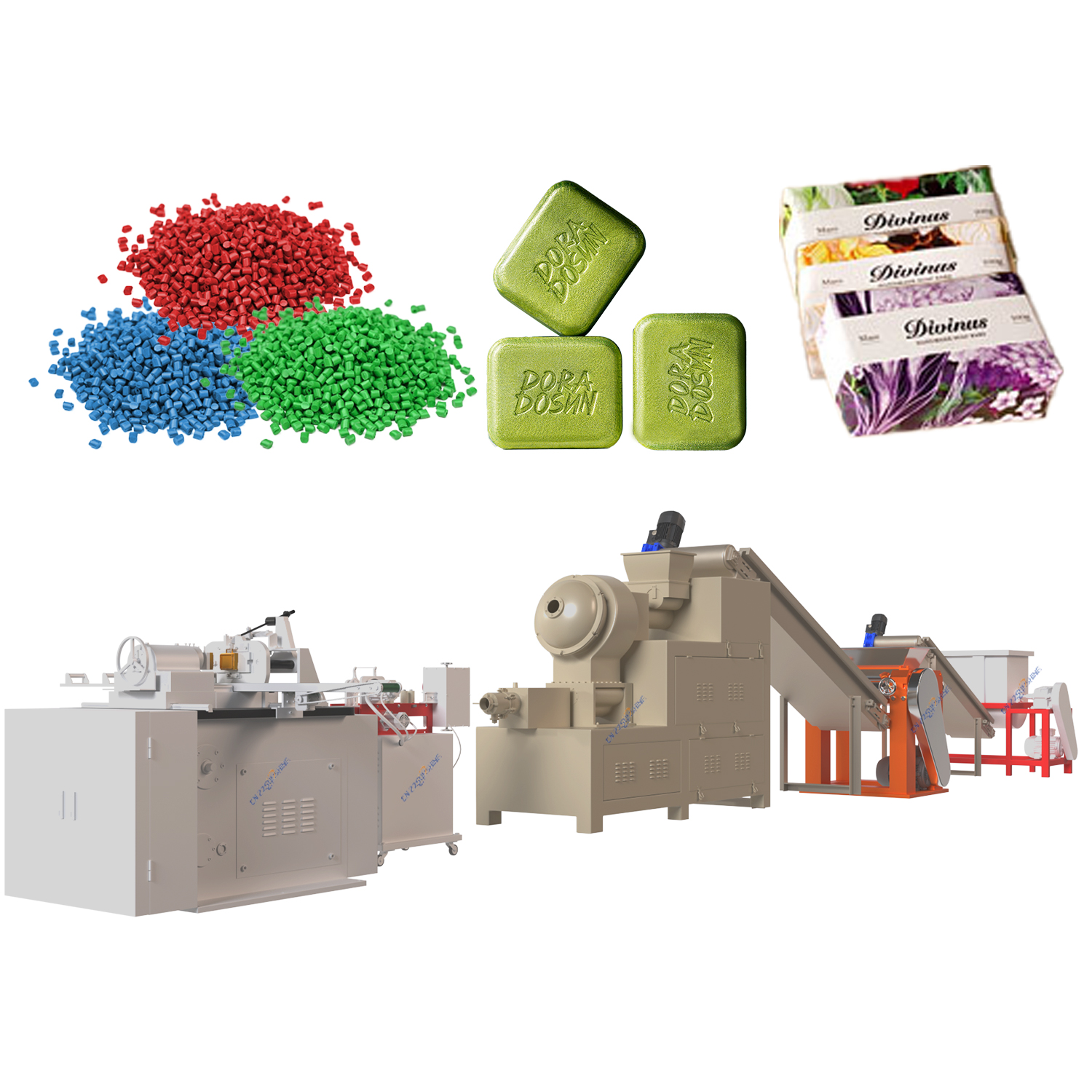Implementing a fully integrated soap making production line is crucial for manufacturers aiming to scale output, ensure consistent quality, and reduce operational costs. The journey from raw materials to finished bars hinges on selecting the right core machinery and understanding how each component interacts within the automated soap production line.
It all starts with precise chemical processing. A robust industrial mixer for chemical processing is fundamental. This unit ensures the homogeneous blending of fats, oils, lye, and additives – the critical saponification phase. Consistent mixing directly impacts the final soap quality and curing time. The mixed soap base, or noodles, then moves to the refining stage.
For standard laundry bar soap production lines, a duplex or triplex soap plodder machine for bar soap is essential. This equipment compresses, homogenizes, and extrudes the soap mass, removing air pockets and ensuring uniform texture. For premium toilet soap finishing lines or bath soap making machines demanding superior quality and translucency, a vacuum plodder is indispensable. Operating under vacuum, it eliminates trapped air far more effectively, resulting in a denser, smoother bar with enhanced aesthetics.
The extruded continuous log of soap proceeds to cutting. While manual cutting is inefficient, an electric washing soap cutter offers significant improvement. However, for true high-volume automation, an automatic soap production line integrates a custom soap cutting machine or automatic block cutter machine. These units precisely slice the extruded log into uniform billets or bars with minimal waste, often incorporating stacking or stamping mechanisms immediately after cutting. This precision is vital for both laundry soap making lines and beauty soap making lines where consistency in size and weight is paramount.
Integrating these components – the industrial mixer, the soap plodder (standard or vacuum), and the automatic cutter – creates a seamless flow. This minimizes human intervention, reduces contamination risk, and maximizes throughput. Leading China feed processing machine suppliers and industrial equipment manufacturers often offer modular soap making machines, allowing customization of the laundry bar soap production line or toilet soap finishing line to specific capacity needs and final product characteristics. When sourcing, consider suppliers offering OEM three roller grinding mill solutions for specialized milling needs, though this is more common in cosmetic soap bases than standard laundry bar production. Investing in a well-designed, integrated line, potentially leveraging factory price industrial chiller units for process cooling where needed, delivers the efficiency and product quality demanded by today’s competitive market.




